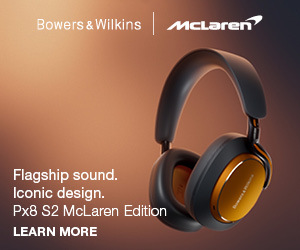Bluetooth sound codecs were never sexy or important until Qualcomm introduced the aptX series exclusive to Snapdragon processors. This shook the foundation of Apple’s AAC and SBC (sub-band coding). These new codecs make a huge difference to sound over Bluetooth.
A Codec is software that takes uncompressed music and encodes (compresses it for transmission) to a device that decodes it. Encoding and decoding can lead to lossy music, so Nirvana is to maximise compression of the music while limiting losses that affect music quality.
Compression takes two forms. It can be simple clipping of frequencies outside human hearing (20Hz-20kHz but practically 50Hz-10kHz) or the number of times it samples the music per second that ranges from around 22 to 192kHz. Higher samples mean less loss and more definition.
Bluetooth 3/4/5 is simply a low-energy, low-bandwidth transmission protocol (like Wi-Fi) that is used between the encode host device (smartphone or laptop) and the decode playing device (earphones, speakers etc).
How big is sound/music?
Very! A 3-minute analogue to digital song is at least 30 Megabytes (16-bit, 44kHz, stereo .WAV file). That same song in high-res (so-called lossless) 64-bit/192kHz 7.1 channel could be well over 2GB.
- Bit rate is the finished file size in kilobits per second and relates to audio quality.
- Sample rate in kHz – the number of times the sound is sampled per second. 44.1kHz covers 5Hz -22.05kHz.
- Bit depth – 8-bit (256 levels or 48dB), 16-bit (65,536 levels or 96dB), 24-bit (16,777,216 levels or 144dB), 32-bit or more is simply the granularity of data stored and relates to the dynamic range (dB).
A codec allows transmitting lossy music over Bluetooth 1/2/3/4/5 with data transmission rates of 700kbps/3Mbps/24Mbps/25Mbps/48Mbps at up to 30 metres.
Music sources
MP3 bit rate is from 8-320kbps (typically 128kbps per channel or ‘radio quality’) at a sample rate from 8-44.1kHz (generally 22kHz). It produces a stereo file size of 256 kilobits every second (they’re larger due to metadata, including album covers). A 3-minute file size is about 6MB.
AAC has a variable bit rate of 8-256kbps (typically 230-250kbps) and a sample rate of 16-96kHz (almost always 44.1kHz). Widely used by Apple, it uses psychoacoustic modelling* to compress and transmit data, so it’s a very processing-heavy codec. A 3-minute track is about 10MB.
CD sound requires 16-bit/44.1kHz (44,100 samples a second) sampling and a 1,411kbps data rate making a 3-minute file of 32MB. Audiophiles comment that CD sampling only covers 80% of the original sound information.
DVD and Blu-ray audio are typically 24-bit/96 or 192kHz and cover almost all the original sound information. A 3-minute 96kHZ is about 104MB, and 192kHz is 274MB.
*Psychoacoustic modelling determines which sound won’t be heard. For example, some sounds within a few milliseconds of louder sounds – even if they come first – won’t be heard. Models are used to determine those; then the encoder abandons them. Conceptually, it’s the same for all lossy compression systems: MP3, AAC, WAV, etc. Just some do it better than others.
- Compressed Lossy includes MP3, AAC and WMA
- Compressed Lossless include FLAC and ALAC
- Uncompressed include WAV, AIFF, LCPM and BEF
Bluetooth Sound Codecs
Remember that the bulk of music comes via SBC or AAC. You need content recorded at the higher bit and sample rates, the host device able to encode for higher codecs, and the receiving device able to decode to make a difference.
In other words, a lossy MP3 will sound the same on almost any codec. A CD quality or higher will sound vastly better on higher-rate codecs.
| Type | Maximum Stereo kbps | Bit depth | Sampling rate * kHz (up to) | Latency m2 |
| SBC | 192-320 | 16 | 44.1 | 150-250 |
| AAC | 250 | 16 | 44.1 | 190-240 |
| aptX | 354 | 16 | 44.1 | 166 |
| aptX HD | 384 | 24 | 48 | 250 |
| aptX Adaptive | 279-420 | 24 | 48 | 50-80 |
| aptX Low Latency | 352 | 24 | 48 | 34 |
| LDAC | 330/660/990 | 24 | 96 | 160-210 |
| LHDC | 900 | 24 | 96 | 30 |
| LLAC | 400-600 | 24 | 48 | 30 |
| Samsung Scalable | 88-512 | 24 | 48 | 80 |
* Hi-Res is 96kHz or greater sample rate.
Back to aptX codecs
aptX (any variety) are superior to SBC and AAC but until Q2, 2023 were exclusive to Qualcomm Snapdragon processors and sound decoder chips.
In order to advance the Bluetooth codec space, Qualcomm has given aptX and aptX HD free to the Android Open Source Project.
Smartphone makers using MediaTek, Exynos, and other processors can now write aptX and HD encoders into their Android implementation. But the aptX adaptive and Low latency versions (which are highly sought after) remain subject to licence fees.
How do you know what codecs you have?
With Apple it is AAC – that is it. With Android, download the free Bluetooth Codec Changer, attach your favourite buds or cans, and you will see.














Comments